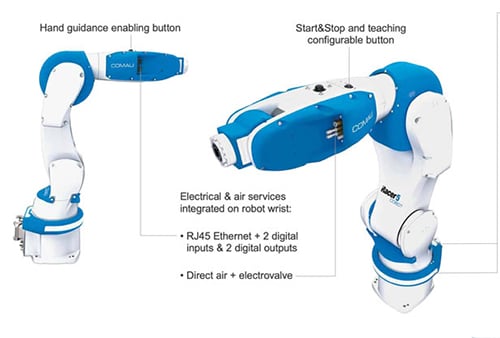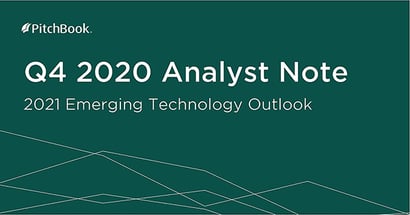What's New in Robotics? 26.03.2021

Posted on Mar 26, 2021 10:04 AM. 7 min read time
News briefs for the week take a look at shipbuilding with robot welders, the versality of a dual-speed cobot, robotics aiding a biotech lab’s major pain points, orchard spraying via autonomous ground vehicles, VC funding in robotics for 2020 and the 2021 outlook for robotics.
Robot welders to build U.S. Coast Guard vessel

Danish-based Inrotech sells specialized, autonomous welding robots—Inrotech-MicroTwin, Inrotech-Classic and Inrotech-Crawler—to U.S.-based Halter Marine.
 Halter will build U. S. Coast Guard’s new Polar Security Cutter. The 460-foot vessel intended for operations in Arctic and Antarctic waters. The robots will help Halter Marine to reduce manhours, increase welding quality and improve productivity. Inrotech’s welding robots usually substitute for 4 to 5 welders per shift per robot.
Halter will build U. S. Coast Guard’s new Polar Security Cutter. The 460-foot vessel intended for operations in Arctic and Antarctic waters. The robots will help Halter Marine to reduce manhours, increase welding quality and improve productivity. Inrotech’s welding robots usually substitute for 4 to 5 welders per shift per robot.
The Inrotech-MicroTwin is a compact and light-weight gantry with 2 welding robots, welding machines and a scanning system for identifying stiffeners on panels. Works fully automatic, push the “start” button; after completed scanning the welding starts automatically.
Dual-speed cobot: Double the flexibility from a single machine
 Turin, world famous for high-performance sports cars— Lancia, Fiat, Pininfarina, etc.—has now birthed the world’s first high-performance cobot. Turin-based Comau, already sporting an extensive line of industrial robots and cobots, adds yet another: this time, the dual-speed Racer 5 (it’s even got a “speedy” name!).
Turin, world famous for high-performance sports cars— Lancia, Fiat, Pininfarina, etc.—has now birthed the world’s first high-performance cobot. Turin-based Comau, already sporting an extensive line of industrial robots and cobots, adds yet another: this time, the dual-speed Racer 5 (it’s even got a “speedy” name!).
In the high-mix, industrial world where the need to perform multiple applications is becoming the norm, a cobot with versatility, such as dual-speed flexibility, is like having two cobots in one. Racer 5 looks like a smart idea.
Whereas most cobots have a single speed at a maximum of 1.5 m/s (usually operated at 1 m/s or less), the Racer 5, on the other hand, operates either at the standard 1.5 m/s or can be switched to high gear at 6 m/s. Cobot speed and industrial speed both in a single cobot.
As Comau notes: “Dual modes, enabling customers to install a single, high-performance solution rather than having to deploy two distinct robots.” Applications requiring fewer or no people in the vicinity can run at faster speeds for more productivity.
Biotech lab: Pain points meet robotics
Biotech lab automation, in the form of robots and cobots, is quickly mitigating two of every biotech laboratory’s MOST nagging pain points: human error & cost.
HUMAN ERROR: Eric Wong, CEO of Nikyang Enterprise (Hong Kong) sees as a major roadblock to innovation because, as he says: “Humans are unreliable.” With 80% of all lab errors caused by staff miscues, Wong sees a change needed because errors stymie the progress of innovation. His LABVO Smartlab of robots/cobots has now eliminated human error in his laboratories, which, as a consequence, enables him to greater insight into his specialty: biochemistry.
COST: Every biotech lab worries about the cost of automation, especially the small to medium-size labs. Inovo Robotics (Hong Kong) specializes in supplying low-cost, high-quality automation tech “to make capable, versatile, robotics accessible to all.” Inovo’s modular cobot arm converts from 650mm to 850mm to 1300mm, with payloads running from 3kg, 5kg, and 10kg.
Inovo’s plug and play modular components offer labs an affordable and capable system to vie with larger and more well-funded competitors. As Inovo’s co-founder Jonathan Cheung puts it: “We’re democratizing automation.”
Look out Detroit, GUSS is here

One of the world’s best Level 5 autonomous vehicles is not a product of Detroit automakers but rather the brainchild of a crop spraying business in Kingsburg, CA.
Back in 2007, Dave Crinklaw of Crinklaw Farm Services began thinking about how to streamline his labor-intensive orchard spraying business. It was inefficient and lacked precision, not to mention hard-to-find manpower and the ever-rising expense of pesticides and fertilizer. In 2015, he began tinkering with autonomous vehicles and prototyping one that might be of help at crop spraying: a driverless orchard sprayer.
Enter GUSS, the world’s first Global Unmanned Spray System for orchards. GUSS was voted a Top 10 New Products Competition at the World Ag Expo as well as garnering an Innovation Award from the Consumer Electronics Show (CES). Better still, GUSS is now in full production mode with global customers lining up to buy.
As one happy customer, Mike Carr of Five Star Farms, enthused: “GUSS has had a major impact on my farm by allowing me to do more with less.
“We get more acres done every shift due to less stopped and downtime. My dependency on labor and all the challenges that come along with it has greatly decreased. In my opinion, GUSS autonomous sprayers are the only way to go moving forward.”
Robotics: $6.3 billion in VC funding for 2020
Robotics investments boomed during the pandemic.
Over the latest 12 months (through March 11), venture firms poured $6.3 billion into robotics companies, up nearly 50% from the $4.3 billion they invested in the prior year.
 Erik Nieves – Founder, Plus One Robotics: “2020 was the first year that more robots were sold to non-automotive users than to automotive customers. This is a watershed moment, demonstrating that the massive growth in e-comm is driving robot adoption and warehouse automation. There has never been a more exciting time to be in robotics.”
Erik Nieves – Founder, Plus One Robotics: “2020 was the first year that more robots were sold to non-automotive users than to automotive customers. This is a watershed moment, demonstrating that the massive growth in e-comm is driving robot adoption and warehouse automation. There has never been a more exciting time to be in robotics.”
Industrial robotics firms garnered $1.9 billion of that funding, up 90% from the $1 billion they took in a year earlier, according to PitchBook. That makes these firms, which serve factories and warehouses, the recipients of nearly one-third of total venture investment in that period as industrial innovation garners more interest from venture investors.
Over the longer term, robotics investments have soared more than five-fold over the past five years, to $5.4 billion in 2020 from $1 billion in 2015,
Industrial robotics investments have rocketed to $1.9 billion from just $300 million in the same period.
Outlook even better for 2021!
PitchBook 2021 Emerging Technology Outlook: Industries Primed for Growth:
- Agtech: Field robotics will receive a record level of VC investment in 2021
- Artificial intelligence & machine learning
- Internet of things: Industrial automation incumbents
- Supply chain tech: Last-mile delivery platforms primed for major IPOs in 2021


Leave a comment